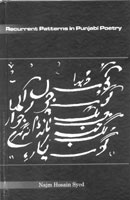A class view of poetry By Nadir Ali
There is some of Najm Hosain Syed's work, where you can tell the earlier writings from his later ones, at least in his poetry, but not in his prose, criticism or drama. This book is a collection of newspaper articles written by him in his mid 20s. But it is as mature and authoritative as his later work in the last forty years. It is a measure of the classic quality of his work, right from the outset. The book under review is the only one in English, all the rest of his 23 books are in Punjabi. Literary criticism in Punjabi is a barren field. Firstly, there is not much work done in this field, and what passes as criticism is extremely poor. Najm is the pioneer of modern criticism in Punjabi, covering all aspects of language, style and the historical context. The relationship of history and literature is his principal concern. Although he has remarkable command over English language he chose to write in Punjabi only in his following seven books of literary criticism. If criticism in essence is knowing the literature, how can you express it in language other than the one in which the reviewed work was written? This view is difficult to appreciate in our 'English only' world. The author has a class view of history as well as literature and language. Hence his choice to speak to the 'Punjabi only' audience. This is not a composite book of criticism, being a collection of sundry newspaper articles. To convey the real flavour of the book here are extracts from four of the book's ten articles in author's own words. The first poet discussed is Lahore's very own, Shah Husain. "Grandson of a convert weaver, he embarrassed everyone by aspiring to the privilege of learning what the revered guardians of traditional knowledge claimed to teach. Then again fairly late in life, he embarrassed everyone by refusing to believe in the knowledge he had received from others and decided to know for himself. He plucked the forbidden fruit anew. Through his deliberate rhythmic, Shah Husain evokes the symbolic music of the Punjab folk songs. His 'Kafis' live within this symbolic background and use it for evolving their own meaning. By calling into life the voice of the folk-singer Husain involves his listeners into the age-old tension which the individual emotion has borne in its conflict with the unchanging realities of Time and Society. But then, suddenly one is aware of change. One hears another different voice also. It is the voice of Husain himself, apparently harmonized with the voice of the folk-singer, and yet transcending it. The voice of the folk-singer has for ages protested against the bondage of the actual, but its fleeting sallies into the freedom of the possible have always been a torturing illusion. The voice of Husain in transcending folk-singer's voice brings into being the dimension of freedom — rendering actual what had for long remained only possible."
The
second poet discussed is Bulleh Shah. "Perhaps the most commonly
recognized recurrent pattern of the tradition of Punjabi poetry is the
poet's intense and unwavering concern with the ultimate and the eternal.
This pattern is so commonly known that, as will be illustrated later,
its implications are generally exaggerated and distorted. The poet's
concern with the ultimate and the eternal is not an indulgence in abstract
speculation. It is the search for a perspective through which to interpret
everyday experience. For two reasons it is convenient to view the phenomenon
of the recurrent patterns of tradition in the work of Bulleh Shah (1680-1753).
Firstly, because chronologically he occupies almost a central position
in the known history of Punjabi poetry, and secondly, because in his
work the patterns outlined above find their most emphatic delineation."
Waris Shah is next. "In spite of the fact that it is found on few bookshelves and fewer bookstalls, Waris Shah's 'Heer' is one of those rare books in all literature which have been popular for ages without any effort being organised in their behalf. Whatever causes that lead to the formation of various outlooks on Waris Shah's work, we can be certain of one thing: none of these outlooks can help us discover the real significance of 'Heer'. The work, where we approach it with any popularly inherited interpretations, slips out of our hands and stands aside mocking our arbitrary presumptions. Waris's mode in 'Heer' is comedy — comedy, though unrestrained to the extent of boisterousness, still more a means of irony than hilarity. The comedy in 'Heer' fulfils itself through patterns of contrast — contrast between surface attitudes and inner reality, between declarations and intentions, between social and individual motives, also the related contrast between tones, rhythms, and gestures.
|
||||||||||||




